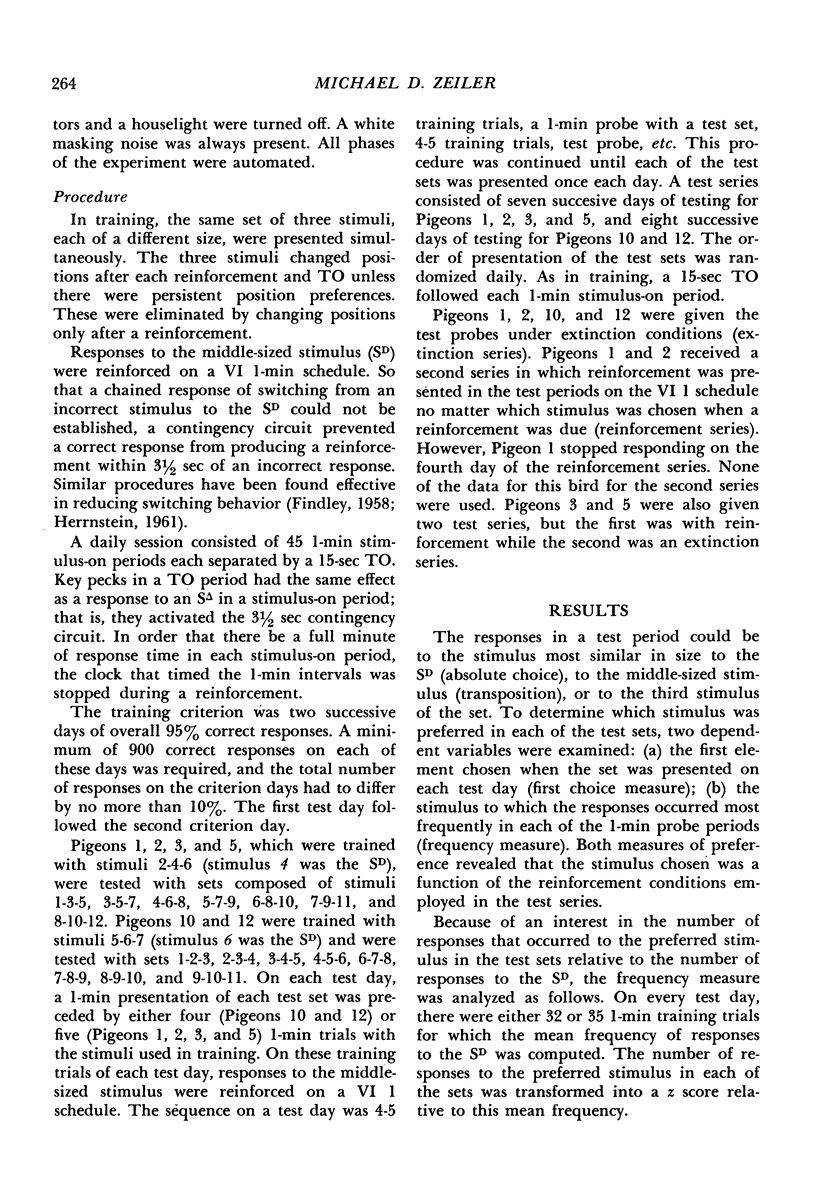Abstract
Pigeons learned to respond to the middle-sized member (SD) of a set of three simultaneously presented stimuli with responses to the SD reinforced on a VI 1 schedule. They were then tested for several days with other sets of three stimuli. One procedure presented reinforcements on a VI 1 schedule during the test independent of the stimulus chosen when a reinforcement was programmed. The tests were also given under extinction conditions. With the testing carried out with extinction, preference consistently was for the test stimulus most similar in physical size to the SD. However, when the tests were with reinforcement, random responding resulted. Another effect of testing with reinforcement was an increase in incorrect responding with the training set. Such a test procedure was unsatisfactory for determining the effective aspect of the SD. The conclusion, based on the data of the extinction series, was that pigeons learned the intermediate size problem on the basis of the discrimination of absolute stimulus properties.
Full text
PDF





Selected References
These references are in PubMed. This may not be the complete list of references from this article.
- Findley J. D. Preference and Switching under Concurrent Scheduling. J Exp Anal Behav. 1958 Apr;1(2):123–144. doi: 10.1901/jeab.1958.1-123. [DOI] [PMC free article] [PubMed] [Google Scholar]
- HERRNSTEIN R. J. Relative and absolute strength of response as a function of frequency of reinforcement. J Exp Anal Behav. 1961 Jul;4:267–272. doi: 10.1901/jeab.1961.4-267. [DOI] [PMC free article] [PubMed] [Google Scholar]
- HONIG W. K. Prediction of preference, transposition, and transposition-reversal from the generalization gradient. J Exp Psychol. 1962 Sep;64:239–248. doi: 10.1037/h0048290. [DOI] [PubMed] [Google Scholar]
- REYNOLDS G. S. Contrast, generalization, and the process of discrimination. J Exp Anal Behav. 1961 Oct;4:289–294. doi: 10.1901/jeab.1961.4-289. [DOI] [PMC free article] [PubMed] [Google Scholar]
- ZEILER M. D. THE RATIO THEORY OF INTERMEDIATE SIZE DISCRIMINATION. Psychol Rev. 1963 Nov;70:516–533. doi: 10.1037/h0045868. [DOI] [PubMed] [Google Scholar]


